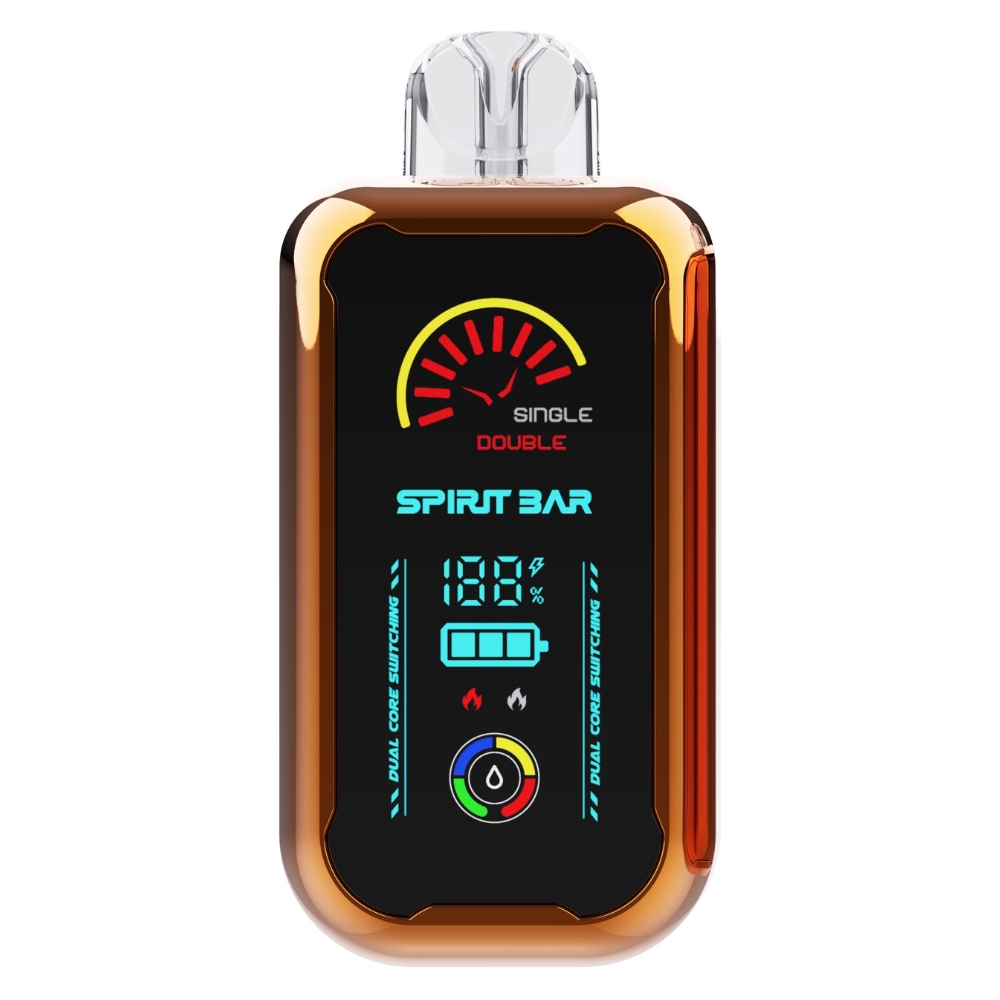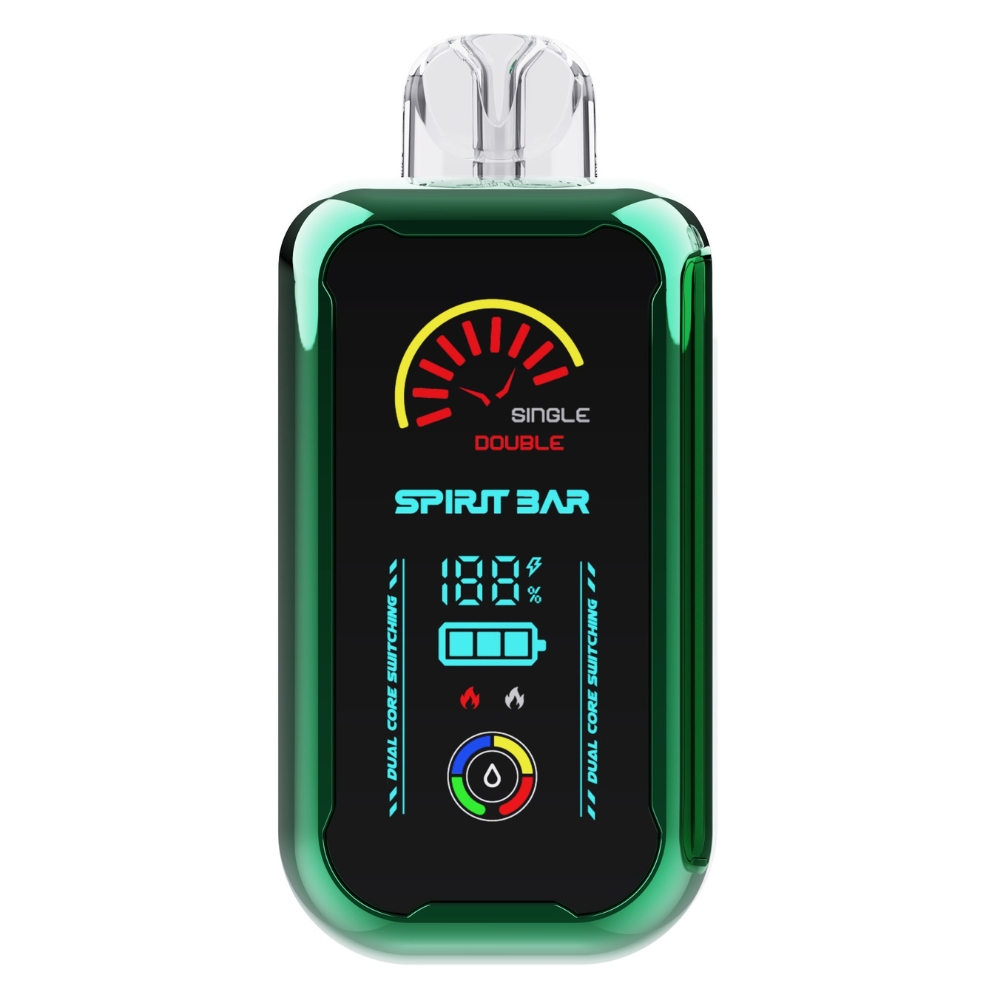What Percentage of Risk is Vape? Understanding the Health Risks of Vaping
If you’re considering vaping, you might be wondering what percentage of risk is involved. While vaping is often marketed as a safer alternative to smoking, it’s important to understand that it still carries risks. In recent years, there has been growing concern about the potential health effects of vaping, particularly among young people.
According to the Centers for Disease Control and Prevention (CDC), e-cigarettes can expose users to harmful chemicals, including nicotine, heavy metals, and volatile organic compounds. Nicotine is highly addictive and can harm the developing brains of young people, which is why the use of e-cigarettes is unsafe for kids, teens, and young adults. In fact, a study released in 2022 found that more than 2.5 million U.S. middle and high school students reported current e-cigarette use in 2022, which includes 14.1% of high school students and 3.3% of middle school students.
While the long-term effects of vaping are still being studied, there is evidence to suggest that it can have negative impacts on respiratory health. The 2019 E-cigarette or Vaping Use-Associated Lung Injury (EVALI) outbreak highlighted the potential harms of vaping, and the consequences of long-term use remain unknown. In this article, we’ll explore what percentage of risk is involved with vaping and what you need to know before you decide to start vaping.
Understanding Vaping
https://www.youtube.com/watch?v=O4_l-klxqCQ&embed=true
Vaping is the act of inhaling and exhaling the aerosol produced by an e-cigarette or similar device. E-cigarettes work by heating a liquid that usually contains nicotine, flavorings, and other chemicals. While vaping is often marketed as a safer alternative to smoking, it still carries risks.
One of the biggest risks associated with vaping is nicotine addiction. Nicotine is highly addictive, and it can lead to changes in the brain that make it difficult to quit. In fact, some studies suggest that vaping may be even more addictive than smoking.
In addition to addiction, vaping can also have negative effects on your health. While e-cigarettes do not contain many of the harmful chemicals found in tobacco smoke, they still contain chemicals that can be harmful when inhaled. For example, some e-cigarette liquids contain diacetyl, a chemical that has been linked to a serious lung disease called bronchiolitis obliterans.
Furthermore, research has shown that vaping can worsen asthma and chronic obstructive pulmonary disease (COPD). Inhaling the chemicals in e-cigarette aerosol can irritate the airways and cause inflammation, making it harder to breathe.
It is also worth noting that vaping can be expensive. Nicotine vaping rechargeable devices cost 3 to 5 times more than a pack of cigarettes in Australia, Canada, England, and the U.S. Moreover, U.S. healthcare costs more than $2,000 per year among vapers compared to those who have never used tobacco.
Overall, while vaping may be less harmful than smoking, it is still not safe. If you are considering vaping, it is important to understand the risks and make an informed decision.
Health Implications of Vaping
https://www.youtube.com/watch?v=ygxMr2AE_bc&embed=true
Vaping has been marketed as a safer alternative to smoking, but it still poses significant health risks. Here are some of the health implications associated with vaping.
Respiratory Risks
Vaping can cause damage to your respiratory system. According to a BMJ study, vaping can cause inflammation in the lungs, leading to coughing, wheezing, and shortness of breath. In addition, vaping can cause bronchiolitis obliterans, a condition commonly known as “popcorn lung.” Popcorn lung is a serious respiratory disease that damages the small airways in the lungs, causing coughing, wheezing, and shortness of breath.
Cardiovascular Risks
Vaping can also cause cardiovascular problems. According to the American Heart Association, vaping can increase your heart rate and blood pressure, which can lead to an increased risk of heart attack and stroke. In addition, vaping can cause the arteries to narrow, reducing blood flow to the heart and brain.
Mental Health Risks
Vaping can also have mental health implications. According to NIH News in Health, vaping can cause addiction and can lead to anxiety and depression. In addition, vaping can cause mood swings and irritability.
In conclusion, vaping poses significant health risks. It can damage your respiratory system, increase your risk of cardiovascular problems, and have mental health implications. If you are considering vaping, it is important to be aware of these risks and to make an informed decision about whether or not to use these products.
Comparative Risk Analysis
When it comes to assessing the risks of vaping, it’s important to compare it to other nicotine substitutes and smoking. Here’s a breakdown of the comparative risks:
Vaping vs Smoking
According to a survey carried out in the United States in 2014, almost half of current smokers (47.6%) and more than half of ex-smokers (55.4%) had ever tried e-cigarettes. While vaping is not completely risk-free, it is widely considered to be less harmful than smoking. A 2019 study published in the Journal of Health Communication found that e-cigarettes have a lower cancer risk than traditional cigarettes.
Here are some key differences between vaping and smoking:
- Smoking releases thousands of harmful chemicals, including tar and carbon monoxide, while e-cigarettes produce vapor that contains fewer harmful chemicals.
- Smoking is a leading cause of preventable deaths worldwide, while the long-term health effects of vaping are still being studied.
- E-cigarettes are not completely without risk, but they are generally considered to be less harmful than smoking.
Vaping vs Other Nicotine Substitutes
Nicotine replacement therapy (NRT) products such as gum, patches, and lozenges are often used to help people quit smoking. While these products are generally considered safe, they have a lower success rate than e-cigarettes. According to a 2022 study published in the Journal of Health Risk Analysis, heated tobacco products (HTPs) and e-cigarettes are considered safer for human health than conventional cigarettes.
Here are some key differences between vaping and other nicotine substitutes:
- E-cigarettes are more effective at helping people quit smoking than other nicotine substitutes.
- Nicotine replacement therapy products are generally considered safe, but they have a lower success rate than e-cigarettes.
- E-cigarettes are not completely without risk, but they are generally considered to be less harmful than other nicotine substitutes.
Risk Factors of Vaping
If you are a vape user, it’s important to be aware of the potential risks associated with vaping. Here are some risk factors to consider:
Age
Young people who vape are at a higher risk of developing nicotine addiction and other health problems. According to the CDC, most e-cigarettes contain nicotine, which is highly addictive and can harm adolescent brain development, which continues into the early to mid-20s [1].
Frequency of Use
The risk of health problems associated with vaping increases with the frequency of use. A study conducted by the CDC found that 94% of survey respondents who used any nicotine-containing e-cigarette, or vaping, products in the past 3 months, and 21% used any THC-containing products, while 11% used both THC-containing products and nicotine-containing products [4].
Type of Vape Products Used
The type of vape products used can also impact the risk of health problems. The CDC has confirmed cases of e-cigarette or vaping use-associated lung injury (EVALI) and deaths attributed to that condition [3]. These cases appear to predominantly affect people who modify their vaping devices or use black market modified e-liquids.
It’s important to note that vaping is still relatively new, and researchers are still learning about the long-term effects of vaping. It’s always a good idea to talk to your doctor about any concerns you may have about vaping and your health.
[1] Quick Facts on the Risks of E-cigarettes for Young People. (n.d.). Centers for Disease Control and Prevention. Retrieved from https://www.cdc.gov/tobacco/basic_information/e-cigarettes/Quick-Facts-on-the-Risks-of-E-cigarettes-for-Kids-Teens-and-Young-Adults.html
[3] 5 Vaping Facts You Need to Know. (n.d.). Johns Hopkins Medicine. Retrieved from https://www.hopkinsmedicine.org/health/wellness-and-prevention/5-truths-you-need-to-know-about-vaping
[4] Risk Factors for E-Cigarette, or Vaping, Product Use-Associated Lung Injury (EVALI) Among Adults Who Use E-Cigarettes. (n.d.). Centers for Disease Control and Prevention. Retrieved from https://www.cdc.gov/mmwr/volumes/68/wr/mm6845e1.htm
Risk Perception and Public Opinion
When it comes to vaping, risk perception and public opinion can vary greatly. Some people believe that vaping is a safer alternative to smoking, while others believe that it is just as harmful, if not more so. The truth is that there is still much we do not know about the long-term effects of vaping.
According to a study published in the American Journal of Public Health, many people have a skewed perception of the risks associated with vaping. Opponents of vaping tend to focus on the risks for young people, while supporters emphasize the potential for e-cigarettes to assist smokers in quitting smoking. As a result, much of the public—including most smokers—now consider e-cigarettes to be just as harmful as combustible cigarettes [1].
However, it is important to note that not all e-cigarettes are created equal. Some e-cigarettes contain harmful chemicals, such as diacetyl, which has been linked to a serious lung disease called bronchiolitis obliterans [2]. Other e-cigarettes contain high levels of nicotine, which can be addictive and harmful to the developing brain [3].
Despite these risks, many people still choose to vape. Some people may believe that the risks associated with vaping are lower than those associated with smoking, while others may simply enjoy the act of vaping. Additionally, some people may use e-cigarettes as a way to quit smoking, as they can slowly reduce the amount of nicotine they consume over time [4].
Overall, the risks associated with vaping are still not fully understood. While some people may believe that vaping is a safer alternative to smoking, it is important to be aware of the potential risks and to make informed decisions about your health. If you are considering vaping, it is important to do your research and to talk to your healthcare provider about the potential risks and benefits.
[1] https://ajph.aphapublications.org/doi/10.2105/AJPH.2021.306416
[2] https://www.ncbi.nlm.nih.gov/pmc/articles/PMC8474118/
[3] https://pubmed.ncbi.nlm.nih.gov/33441461/
[4] https://www.ncbi.nlm.nih.gov/pmc/articles/PMC9383448/
Regulation and Risk Management
When it comes to vaping, there are certain regulations and risk management strategies in place to help protect consumers. These regulations and strategies are put in place to help minimize the risks associated with vaping.
The US Food and Drug Administration (FDA) regulates e-cigarettes, vapes, and other electronic nicotine delivery systems (ENDS). The FDA has the authority to regulate the manufacturing, distribution, and marketing of ENDS. This includes regulating the ingredients used in ENDS and ensuring that they are safe for consumers.
In addition to FDA regulations, some states and localities have their own regulations in place for ENDS. For example, some states have minimum sales age laws that restrict the sale of e-cigarettes to adolescents. Other states have bans on flavored e-cigarettes, which are popular among young people.
Despite these regulations, there are still risks associated with vaping. The use of e-cigarettes is unsafe for kids, teens, and young adults, according to the Centers for Disease Control and Prevention (CDC). Vaping can cause respiratory and other symptoms, and in some cases, can lead to hospitalization or even death.
To help minimize the risks associated with vaping, it is important to follow the regulations and risk management strategies in place. This includes only using ENDS products that are regulated by the FDA and following all warning labels and instructions. It is also important to avoid using ENDS products if you are pregnant or have a pre-existing medical condition.
Overall, while there are risks associated with vaping, following the regulations and risk management strategies in place can help minimize these risks.


